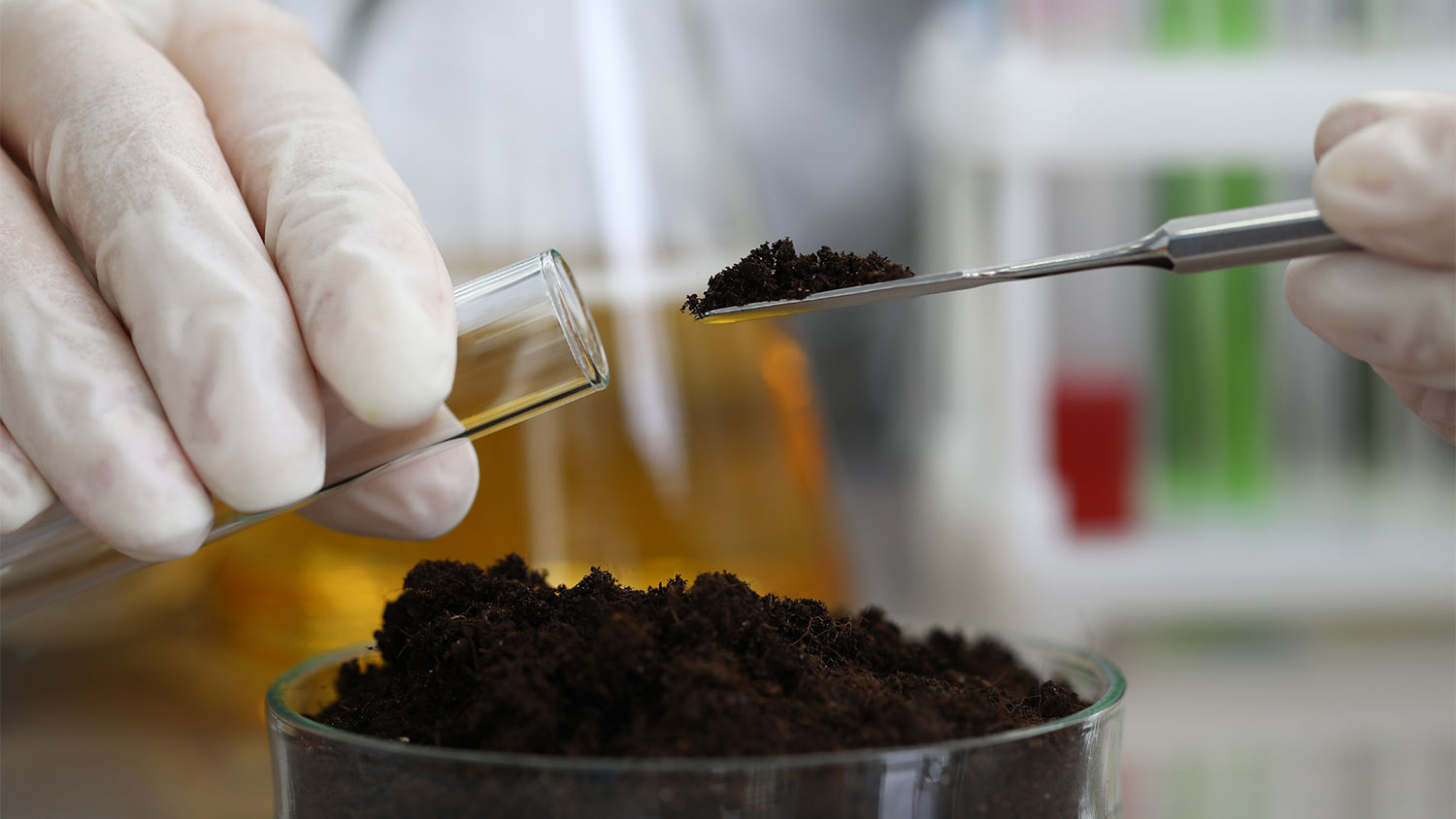
How much do hedges cost? Discover average hedge installation prices, key cost factors, and tips to save money on your landscaping project.
Ivy removal will cost you anywhere from $400 to $600 or about $500 on average, depending on the removal method, the ivy's location, and local labor costs.


The cost of ivy removal is based on several factors, including type of ivy, amount of debris removal, and the removal method.
You can remove ivy using herbicide, manual removal, or a combination of both.
Professionals charge $50 to $75 per hour to remove ivy.
Consult an ivy removal professional for an accurate quote based on your project specifics.
Enjoying your yard can be difficult when you've got poison ivy lurking nearby. If you've been thinking about removing these pretty-but-poisonous plants, it's important to understand what the job entails so you can budget for the project. Treating a smaller area with herbicide can cost as little as $300, but if you have extensive growth onto fences and up trees, you could pay $850 or more to get rid of it.
The cost to remove ivy mostly depends on the treatment method and project scope, but you should also account for the cost of estimates and debris removal.
Because every poison ivy removal job is different, some professionals may insist on a site visit so that they may complete a comprehensive cost estimate. This involves walking your property, identifying problem areas, and determining a treatment plan.
Expect to pay $75 per hour for this quote, with a two-hour minimum. If you accept the quote, your technician may apply what you paid for your estimate toward the project cost.
The extent of your ivy growth plays a big role in how much you'll pay to have a professional remove it. The more ivy you have directly relates to the amount of chemicals and/or time a tech will need to address the issue.
The location of the ivy also impacts removal costs. For example, isolated spots of ivy throughout your yard are easier to treat than large areas that have spread as ground cover. Likewise, ivy that's spread to a nearby fence is more expensive to treat than that on the ground, but ivy that's winding up a tree will be even pricier to treat.
For ground-level ivy, expect to pay $50 to $75 per hour for eradication. For ivy that's growing on trees, you'll generally pay $100 per hour or more because a local tree service or similar technicians will need ladders to reach the high-reaching vines.
If you choose a treatment method that involves physical removal of the ivy, you may be assessed additional fees for the bagging and disposal of the refuse. You'll typically pay $25 per 10-pound bag or $100 per cubic yard.
Once uprooted, you’ll also need to dispose of ivy at the proper facility either on your own or by hiring a local junk removal service. Composting is one DIY way to get rid of ivy leftovers but it’s not so straightforward, as the plant can easily regrow even in such conditions. It may also not be accepted with your usual trash for that very reason.
Instead, the best way to remove yard waste like this is to arrange a pick up with a yard cleanup service—who will load, transport, and drop it off at the correct recycling center—or rent a dumpster to drop it off yourself. The former is a good pick if you need to get rid of ivy ASAP, but you may prefer the latter if you need a timeline with more flexibility. You’ll pay between $60 and $600 to hire a junk removal company, and between $290 and $480 for a dumpster rental.
There are two types of ivy: non-climbing ivy and climbing ivy. How much it costs to remove ivy on your property will depend on the type of plant, how much area it's covering, and the removal method you choose.
Non-climbing ivy describes plants that grow close to the ground. They generally take the shape of bushes and shrubs rather than vines, with poison oak and poison sumac being common varieties.
Between the two types of ivies, this kind is typically easier to remove because there's no need for climbing ladders. The cost for removing non-climbing ivy typically ranges from $300 for treatment with insecticide to $500 for manual extraction.
Climbing ivy can spread low throughout your yard, but it can also wind its way up fences, poles, and trees. They usually present as vines, like English ivy and poison ivy.
Removing climbing ivy tends to be a tougher job due to the way the plant entangles itself on nearby structures and climbs. Depending on how long the ivy has been allowed to grow, removal may require a ladder. The average cost to remove climbing ivy ranges from $500 to $850.
Professionals typically charge $50 to $75 per hour to remove ivy. This cost can go up to $100 per hour or more if the job requires climbing, such as removing ivy from a tree.
The total cost of your project will depend on the type of ivy, how far it has spread, and the treatment method you choose. The most affordable and quickest treatment option is herbicide spray, while the most expensive and effective is manual removal.
The former may take up to three hours, while the latter can take much more depending on the extent of the plant's growth.
The three treatment methods most poison ivy removal companies will offer include herbicide spraying, manual removal, and a combination of the two.
When you choose this method, a local landscaper or other professional will apply a strong herbicide to the ivy. Over the course of several days and weeks, the herbicide will poison the plant and kill off its growth.
This option is generally the most affordable, but it does come with some drawbacks. Herbicides may not completely kill the ivy plant at the root, so there's a possibility that it will grow back. The herbicide can also be dangerous to humans, animals, and other plants.
Manual removal is generally the most expensive and labor-intensive treatment option. With this method, a professional removes the ivy by hand, typically by digging it up to better guarantee removal of the roots.
Many go for this option if they’re trying to avoid using harsh chemicals on their lawn, but it usually takes quite a bit of time and muscle.
A middle-of-the-road option in terms of cost and effort involves using both herbicide and manual removal. In these cases, a technician first treats the ivy with an herbicide. When the plant dies, the tech returns to remove debris by hand. This does require some work, but it's typically easier to remove dead poison ivy plants than live ones.

While you could save between $400 and $600 by removing ivy yourself, there are several factors to consider before performing DIY ivy removal. Your personal safety tops the list, as poison ivy and other species can cause severe irritations or worse, and can't be disposed of easily. DIY herbicide use can carry health and safety risks as well. Additionally, working from ladders to reach climbing ivy can also pose a risk of injury. Hiring a local yard cleanup pro to handle the task is your best option.
Ivy can be stubborn and hazardous to remove, so here's why hiring a pro is your best option:
Professionals can accurately identify ivy species and choose the safest and most effective treatment method.
Yard cleanup pros know how to remove vines without damaging trees, fences, or landscaping.
Experts use the proper protective gear and follow safety protocols to reduce exposure to urushiol, the substance in certain ivy varieties that causes an intense rash.
Pros understand when and how to use herbicides and how to avoid harming pets or desirable plants.
They have access to professional-grade products, which can be more effective than store-bought versions.
Your yard cleanup pro will know how to handle ivy disposal in accordance with local regulations.
Reputable companies may offer work warranties or can provide follow-up visits if necessary.
If you want to participate in the ivy removal process, focus on smaller, more manageable tasks, such as the following:
Clearing leaves, brush, and obstacles so your ivy removal pro can reach the offending growth easily
If it's safe and legal to do so, you can often tackle ivy disposal after the removal is complete
Limiting DIY work to small ground-level patches rather than vines growing up trees or structures
Monitoring the area after treatment, noting any regrowth, and reporting it to your specialist
The easiest way to save money on poison ivy removal costs is to not let the problem get out of control. As soon as you notice ivy, take steps to eradicate it, either yourself or with the help of a professional. The smaller the area that has to be treated, the less you'll pay.
If you're already dealing with extensive ivy, the most affordable way to treat it is through herbicide spraying. Once the ivy plant is dead, you can save further by disposing of the refuse yourself. However, remember that caustic urushiol oil remains even in dead leaves, stems, and roots, so you'll need to take great care when handling debris.
Be ready to describe the types, locations, and details of the ivy you're having trouble with.
Discuss your options for removal methods, including the use of herbicides, manual removal, or a combination of both.
Review the cost estimate to determine whether disposal, a guarantee, or follow-up visits are included in the scope of the work.
Ask about ongoing maintenance tasks you can perform to prevent regrowth.
Home is the most important place on earth, which is why Angi has helped more than 150 million homeowners transform their houses into homes they adore. To help homeowners with their next project, Angi provides readers with the most accurate cost data and upholds strict editorial standards. We survey real Angi customers about their project costs to develop the pricing data you see, so you can make the best decisions for you and your home. We pair this data with research from reputable sources, including the U.S. Bureau of Labor Statistics, academic journals, market studies, and interviews with industry experts—all to ensure our prices reflect real-world projects.
Want to help us improve our cost data? Send us a recent project quote to [email protected]. Quotes and personal information will not be shared publicly.
From average costs to expert advice, get all the answers you need to get your job done.

How much do hedges cost? Discover average hedge installation prices, key cost factors, and tips to save money on your landscaping project.

A landscape designer can elevate your outdoor space and bring your vision to life. Use this landscape design cost guide to budget for your next project.

Looking to step up your golf game without leaving your property? This guide details backyard putting green costs to help you decide if this project is worth it.

Get a clear breakdown of geotechnical report costs, including average prices, cost factors, and tips to help homeowners budget for their project.

Want a healthy, green lawn fast? Learn how to lay sod in just one day so that its grass grows into a robust lawn you’ll enjoy for many seasons to come.

If you’re trying to prevent erosion in your yard, riprap might be the right material for your project. So, what is riprap, exactly? Let’s walk through it.